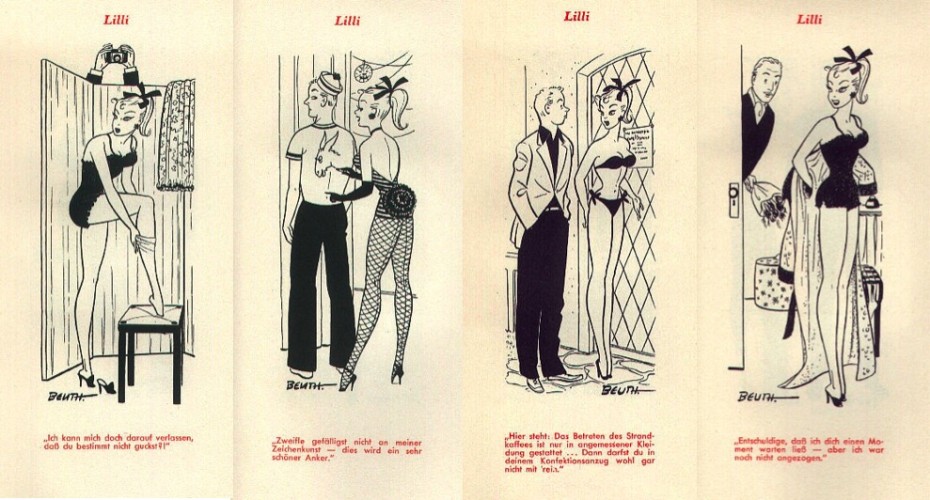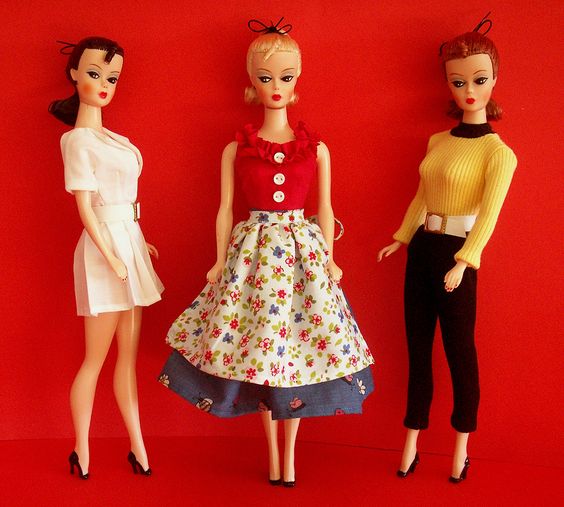Inimitable and instantly recognizable, Barbie is a figure that huge swathes of the population have grown up with. While her image might have changed according to each time period, the doll’s basic approach has remained the same, becoming one of the most enduring brands of all time. Although Barbie might represent the ultimate American girl today, her origins were altogether different. Despite her clean cut image, Barbie’s past is a lot more sordid than you might have realized and in order to get to the heart of the matter, we have to journey back to 1950s Germany.
Lilli was a cartoon character that was portrayed in a daily newspaper as a way of filling blank columns. Taking the form of a sassy young girl, the character was often depicted in less than flattering images, shown as using her looks in order to find a husband. By 1953, the comic had proven to be so popular that the newspaper commissioned Lilli to be turned into a real doll to help market it to a wider audience. Representative of a changing Germany, the character talked freely about sex and dating and even had her own job. At the same time, Lilli was renowned for her two dimensionality, looking constantly for a way to find easy money.
The original Lilli doll was created in two sizes and was the first of its kind. With better quality features, a thicker head of hair and straight legs, the Lilli doll was sleeker and more streamlined than other dolls on the market, representing a change in consumer tastes. For the first time, the doll’s hair came in a number of different colors and she wore makeup to reflect current tastes. The doll was every bit the counterpart of the cartoon character, representing the ideology of Lilli.
Despite her popularity, Lilli was not considered to be a children’s toy. Due to the nature of the accompanying cartoon strips, the character was marketed to an older audience, sold in tobacco shops or bars. The doll was primarily a gag gift, given between men for a stag party.
As Lilli’s success grew across Europe, her name soon reached the shores of America. Ruth Handler, president of toy manufacturer Mattel eventually got her hands on the Lilli doll and had something of a brain wave. Having seen her daughters playing with the doll, Handler realized that the doll had potential for a different market and soon enough, she was drawing up ways of transforming Lilli for the American children’s market.
The first Barbie doll was nothing if not an homage to Lilli. Kitted out with virtually the same face, hair and body, the doll used a huge chunk of Lilli’s measurements, culminating in a hand-sized toy for children that was a cut above the rest. The toned down Barbie doll made its first splash at the 1959 American Toy Fair in New York and became a huge success. Things weren’t so easy for Mattel, however, who were promptly sued when creators of Lilli, the Louis Marx Company, noticed the similarities between the dolls.
The legal battle between the two companies continued over a period of three years, during which time the Louis Marx Company complained of how Mattel had directly copied both the face and head of their doll. In 1964, however, the case was settled culminating in Mattel buying the rights for the Lilli doll. From that point on, Lilli ceased to exist and the Barbie empire only grew larger.
Today, Barbie is one of the most popular and enduring toys in history. Continuing to grow despite controversy, the doll is changing to meet the times, changing its original Lilli-inspired form to speak to a larger audience.




